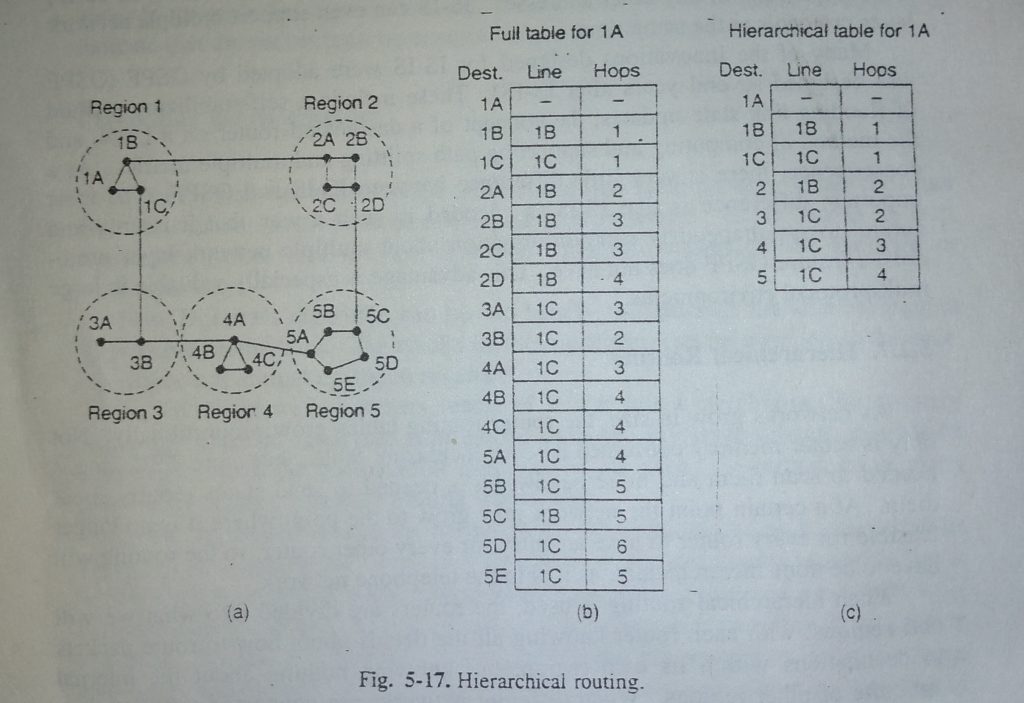How Works Hierarchical Routing
How Works Hierarchical Routing As systems develop in size, the switch directing tables develop relatively. Not exclusively is switch memory devoured by regularly expanding tables, however more CPU time is expected to check them and more data transmission is expected to send status reports about them. At one point the system may develop to the point where it is never again achievable for each switch to have a section for each other switch, so the steering should be done progressively, all things considered in the phone organize.(How Works Hierarchical Routing) At the point when progressive steering is utilized, the switches are isolated into what we will call districts, with every switch knowing every one of the insights concerning how to course parcels to goals inside its own area, yet thinking nothing about the inner structure of different locales. At the point when various systems are associated together, it is normal to view everyone as a different locale so as to free the switches in a single system from knowing the topological structure of different ones. For colossal systems, a two-level pecking order might be lacking; might be important to bunch the districts into bunches, the groups into zones, the zones into gatherings. etc, until we come up short on names for collections. For instance of a staggered chain of importance, think about how a bundle may be directed from Berkeley, California to Malindi, Kenya. The Berkeley switch would know the definite topology inside California yet would send hard and fast of-state traffic to the Los Angeles switch. The Los Angeles switch would have the option to course traffic to other household switches, however would send outside traffic to New York. The New York switch would be star grams to guide all traffic to the switch in the goal nation answerable for dealing with outside traffic, say in Nairobi. At last, the parcel would work its way down the tree in Kenya until it got to Malindi. Figure 5-17 gives a quantitative case of directing in a two-level chain of command with five locales. (How Works Hierarchical Routing) The full steering table for switch 1A has 17 sections, as appeared in Fig. 5-17(b). When directing is done progressively, as in Fig. 5-17(c), there are sections for all the nearby switches as in the past, however all different locales have been con thick into a solitary switch, so all traffic for district 2 goes by means of the 1B-2A line, yet the remainder of the remote traffic goes through the 1C-3B line. Various leveled directing has decreased the table from 17 to 7 passages. As the proportion of the quantity of districts to the quantity of switches per area develops, the reserve funds in table space increment.
Unfortunately, these increases in space are not free. There is a punishment to be paid. furthermore, this punishment is as expanded way length. For instance, the best course from 1A to 5C is by means of district 2. be that as it may, with progressive steering all traffic to area 5 goes by means of locale 3, since that is better for most goals in district 5. When a solitary system turns out to be extremely enormous, a fascinating inquiry is: what number levels should the order have? For instance, consider a subnet with 720 switches. On the off chance that there is no chain of command, every switch needs 720 steering table sections. On the off chance that the subnet is apportioned into 24 districts of 30 switches each, every switch needs 30 neighborhood passages in addition to 23 remote sections for a sum of 53 sections. On the off chance that a three-level chain of importance is picked, with eight bunches, each containing 9 districts of 10 switches, every switch needs 10 sections for neighborhood switches, 8 passages for steering to different locales inside its very own group, and 7 sections for far off groups, for a sum of 25 sections. (How Works Hierarchical Routing)Kamoun and Kleinrock (1979) have found that the ideal number of levels for aN switch subnet is In N, requiring a sum of e In N sections per switch. They have likewise indicated that the expansion in viable mean way length brought about by progressive steering ing is adequately little that it is generally worthy.
HOME PollyBD Networking Blogspot
PollyBD Networking Blogspot




